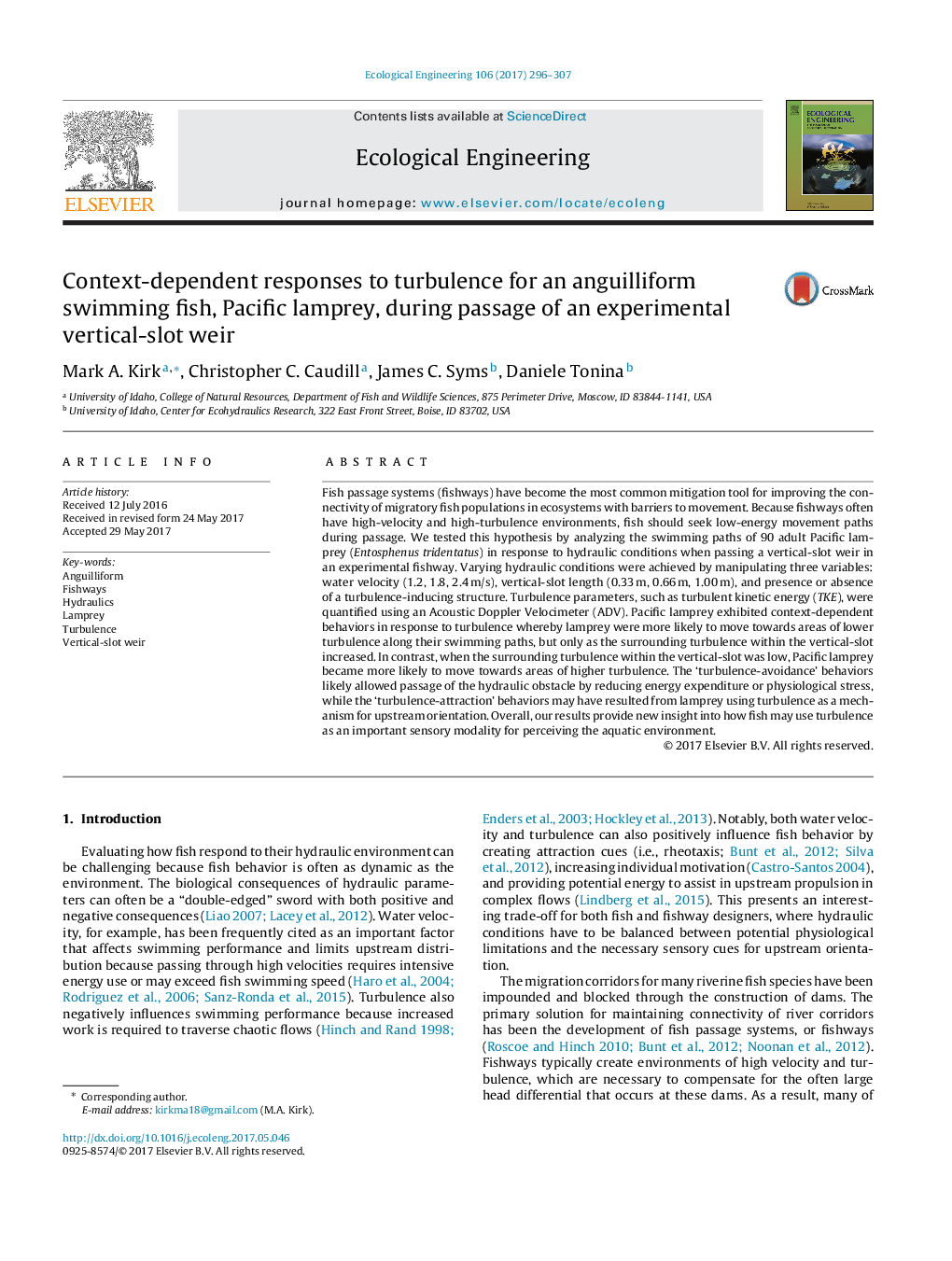| کد مقاله | کد نشریه | سال انتشار | مقاله انگلیسی | نسخه تمام متن |
|---|---|---|---|---|
| 5743846 | 1412322 | 2017 | 12 صفحه PDF | دانلود رایگان |
عنوان انگلیسی مقاله ISI
Context-dependent responses to turbulence for an anguilliform swimming fish, Pacific lamprey, during passage of an experimental vertical-slot weir
ترجمه فارسی عنوان
واکنش های وابسته به زمینه به آشفتگی برای یک ماهی شنا ماهی قاعدگی، نهنگی اقیانوس آرام، در طول گذراندن آزمایش بار عمودی آزمایشی
دانلود مقاله + سفارش ترجمه
دانلود مقاله ISI انگلیسی
رایگان برای ایرانیان
موضوعات مرتبط
علوم زیستی و بیوفناوری
علوم کشاورزی و بیولوژیک
بوم شناسی، تکامل، رفتار و سامانه شناسی
چکیده انگلیسی
Fish passage systems (fishways) have become the most common mitigation tool for improving the connectivity of migratory fish populations in ecosystems with barriers to movement. Because fishways often have high-velocity and high-turbulence environments, fish should seek low-energy movement paths during passage. We tested this hypothesis by analyzing the swimming paths of 90 adult Pacific lamprey (Entosphenus tridentatus) in response to hydraulic conditions when passing a vertical-slot weir in an experimental fishway. Varying hydraulic conditions were achieved by manipulating three variables: water velocity (1.2, 1.8, 2.4Â m/s), vertical-slot length (0.33Â m, 0.66Â m, 1.00Â m), and presence or absence of a turbulence-inducing structure. Turbulence parameters, such as turbulent kinetic energy (TKE), were quantified using an Acoustic Doppler Velocimeter (ADV). Pacific lamprey exhibited context-dependent behaviors in response to turbulence whereby lamprey were more likely to move towards areas of lower turbulence along their swimming paths, but only as the surrounding turbulence within the vertical-slot increased. In contrast, when the surrounding turbulence within the vertical-slot was low, Pacific lamprey became more likely to move towards areas of higher turbulence. The 'turbulence-avoidance' behaviors likely allowed passage of the hydraulic obstacle by reducing energy expenditure or physiological stress, while the 'turbulence-attraction' behaviors may have resulted from lamprey using turbulence as a mechanism for upstream orientation. Overall, our results provide new insight into how fish may use turbulence as an important sensory modality for perceiving the aquatic environment.
ناشر
Database: Elsevier - ScienceDirect (ساینس دایرکت)
Journal: Ecological Engineering - Volume 106, Part A, September 2017, Pages 296-307
Journal: Ecological Engineering - Volume 106, Part A, September 2017, Pages 296-307
نویسندگان
Mark A. Kirk, Christopher C. Caudill, James C. Syms, Daniele Tonina,
